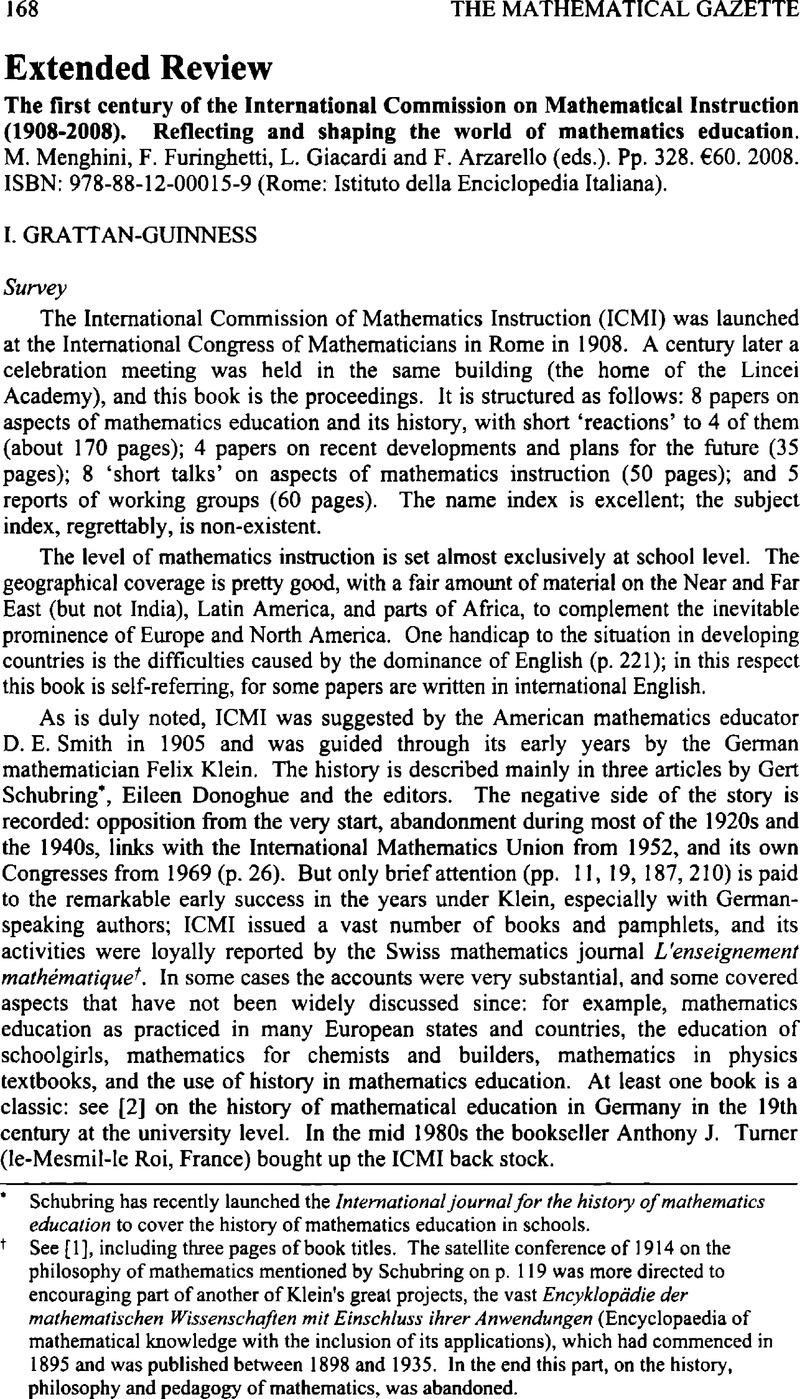10.
Grattan-Guinness, I.,
‘History or heritage? An important distinction in mathematics and for mathematics education’,
Amer. Math. Monthly,
111, pp.
1–
12 (
2004). Also in
van Brummelen, G. and
Kinyon, M. (eds), Mathematics and the historian's craft: The Kenneth O. May lectures (New York: Springer, 2005), pp. 7-21.
Google Scholar 